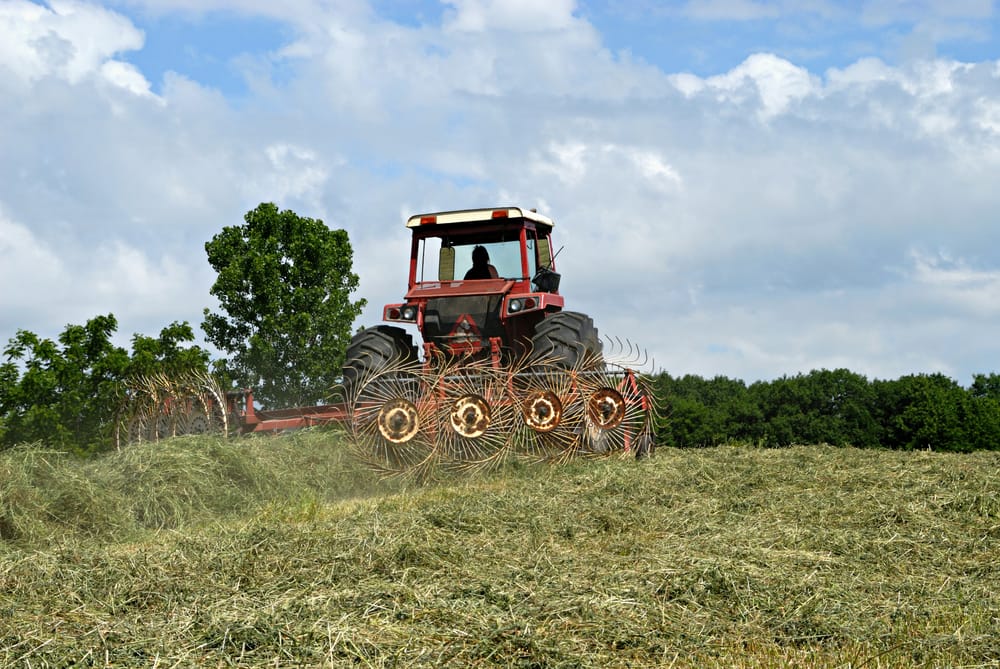- Call Us 1 306-745-2711

6 Signs It’s Time to Replace Your Hay Rake
A hay rake is a workhorse on any forage operation—but like any piece of equipment, it won’t last forever. Whether you’re raking hundreds of acres or managing a small farm, knowing when to replace an old hay rake can save you time, reduce crop loss, and prevent costly breakdowns during peak harvest.
If you’re unsure whether to keep repairing your current unit or start shopping for a new one, here are six key signs it might be time to replace or upgrade your hay rake.
1. Uneven or Incomplete Windrows
One of the clearest signs your hay rake isn’t doing its job properly is when your windrows are inconsistent. Maybe they’re uneven, too loose, too tight, or you’re noticing a lot of missed hay. This can lead to poor drying, uneven baling, and ultimately lower forage quality.
Worn-out teeth, broken tines, or warped rake arms can all contribute to inconsistent raking. If replacing parts hasn’t solved the issue—or it’s getting harder to find replacements—it’s a good sign it’s time to replace your old hay rake.
2. Frequent Breakdowns or Repairs
Like any machinery, a hay rake will wear down over time. But when breakdowns become regular and repairs start eating into your time and budget, it’s often more cost-effective to invest in an upgraded hay rake.
Chasing down replacement parts for decades-old rakes can be a frustrating task. If you’re spending more time in the shop than in the field, it’s time to ask whether your money is better spent on a more modern, reliable unit.
3. Poor Ground Following or Missed Hay
Ground contouring is critical for a clean raking job. If your old rake skips low spots or gouges high spots, it might be due to outdated or worn-out suspension systems. Older designs often lack the adjustability or flotation offered by modern rakes—meaning more missed hay, more passes, and more fuel burned.
If your rake struggles to follow the terrain, consider upgrading to a new model designed with independent wheel suspension and improved float, like the Bale King series, built for maximum ground-hugging performance.
4. Excessive Hay Contamination
Another red flag? Dirt, rocks, or debris in your windrows. A rake that drags or digs into the ground can reduce the quality of your hay and cause excessive wear on your baler. While some of this can be corrected through adjustments, older or poorly designed rakes may never perform cleanly again.
A modern replacement can help reduce loss and contamination, improving feed quality and bale consistency.
5. Incompatibility with Modern Equipment
If you’ve upgraded your baler or tractor recently, you might find your old rake isn’t keeping up. Whether it’s the working width, speed, or hitch compatibility, older implements weren’t designed with today’s higher horsepower tractors or wide baling windows in mind.
Newer models like those from Bridgeview Manufacturing offer larger working widths, improved hydraulic controls, and faster transport capabilities—saving you time and fuel while keeping up with modern demands.
6. Frame Fatigue or Structural Damage
No matter how well you maintain your hay rake, frame fatigue eventually sets in—especially on older units that have raked thousands of acres. Look for signs like cracked welds, rusted frame sections, bent arms, or loose joints that can’t stay tight.
Structural issues can lead to safety concerns and poor performance, and in some cases, repairs are no longer feasible. When metal fatigue is widespread, replacing your old hay rake is the smarter—and safer—move.
Don’t Let an Old Rake Slow You Down: Upgrade Before it’s Too Late
Hay season doesn’t wait for equipment to catch up. If your current rake is showing signs of age, it might be time to stop patching it together and start looking at new solutions. Modern hay rakes are designed for durability, clean raking, and higher efficiency across a range of conditions.
Explore the Bridgeview hay rake lineup to find a model that fits your operation. Built in Canada and engineered for real-world performance, they offer the rugged reliability you need.
Ready to replace your hay rake? Don’t wait for it to fail during your busiest season. Make the switch before it costs you time, fuel, or forage quality. Contact Bridgeview Manufacturing today.
